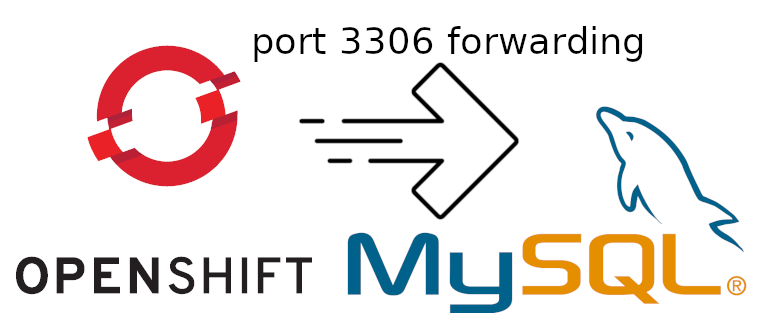Sunday, July 09, 2023
SSH private key authentication with WinSCP and PuTTY Gen
Simplify your login process by using SSH keys for authentication when you are connecting to your server.
[applmgr@vm-centos7 ~]$ cd ~ [applmgr@vm-centos7 ~]$ mkdir -p .ssh [applmgr@vm-centos7 ~]$ chmod 700 .ssh [applmgr@vm-centos7 ~]$ ls -al total 12 drwx------. 6 applmgr applmgr 119 Jul 9 20:27 . drwxr-xr-x. 4 root root 36 Jul 9 20:05 .. -rw-r--r--. 1 applmgr applmgr 18 Oct 31 2018 .bash_logout -rw-r--r--. 1 applmgr applmgr 193 Oct 31 2018 .bash_profile -rw-r--r--. 1 applmgr applmgr 231 Oct 31 2018 .bashrc drwxrwxr-x. 3 applmgr applmgr 18 Jul 9 20:06 .cache drwxrwxr-x. 3 applmgr applmgr 18 Jul 9 20:06 .config drwxr-xr-x. 4 applmgr applmgr 39 Jul 4 19:01 .mozilla drwx------. 2 applmgr applmgr 6 Jul 9 20:27 .ssh
[applmgr@vm-centos7 ~]$ cd .ssh/ [applmgr@vm-centos7 .ssh]$ touch authorized_keys [applmgr@vm-centos7 .ssh]$ chmod 600 authorized_keys [applmgr@vm-centos7 .ssh]$ vi authorized_keys
Under "SSH" > "Authentication", check the "Allow agent forwarding", and select the privates key file that you've saved just now.
Sunday, April 02, 2023
PostgreSQL installation & connecting it to to Oracle SQL Developer/HeidiSQL
https://www.digitalocean.com/community/tutorials/how-to-install-and-use-postgresql-on-ubuntu-20-04
Login to your shell and execute below command lines.
$ sudo apt update$ sudo apt install postgresql postgresql-contrib
Now enable remote access to your PostgreSQL by editing 2 files under "/etc/postgresql/12/main/".
https://support.cpanel.net/hc/en-us/articles/4419265023383-How-to-enable-remote-PostgreSQL-access
Note that "12" is the version number. Change it according to the installed version number.
Edit "postgresql.conf" file and add...
listen_addresses = '*'Edit "pg_hba.conf" file and add...
host all all 0.0.0.0/0 md5
Now start your PostgreSQL DB using "systemsql" command.
$ sudo systemctl start postgresqlBefore you can connect to the PostgreSQL , you need a user. Create PostgreSQL user "puser" with below command line.
$ sudo -u postgres createuser --interactiveAnd you also need a DB to start with. Create PostgreSQL DB named "pdbase" with below command line.
$ sudo -u postgres createdb pdbaseCreate Linux user matching with the PostgreSQL user "puser".
$ sudo adduser puserSwitch user to "puser" and run "plsql" to login to the PostgreSQL DB.
$sudo -u puser psql -d pdbaseYou should now get the "plsql" prompt as below indicating that you have successfully login to the your PostgreSQL DB.
pdbase=#Use "\l" to list databases or use "\dt" to list tables, these is just to make sure the DB is running fine.
pdbase=# \lpdbase=# \dtNow alter password for "puser", This password will be used to connect through remote connection such as Oracle SQL Developer or HeidlSQL.
pdbase=# ALTER USER puser WITH PASSWORD 'mypass';Example connecting from SQL Developer
https://www.oracle.com/database/technologies/jdbc-migration.html
Please refer above URL to add JDBC driver to your SQL developer.
Fill up necessary info such as user/pass/host/port/db and hit Test/Connect.
Example connecting from HeidiSQL.
Saturday, July 30, 2022
Red Hat OpenShift port forwarding to access MySQL at port 3306
Open CMD prompt and paste the copied token, assuming that you have already installed the OC tool (OpenShift CLI)
Now, list available pods that you have there.
RSH into you MySQL using "oc rsh <podname>" as below. You should get the shell prompt.
Get user/pass/host/port values from the environment variables using "env|grep <string>" command.
- MYSQL_PASSWORD = ************
- MYSQL_USER = userBUW
- MYSQL_SERVICE_HOST = 172.30.117.29
- MYSQL_SERVICE_PORT = 3306
Output "Forwarding from .... > 3306" indicates that the port forwarding is currently active.
Thursday, July 28, 2022
Setting up Joomla 4 and MySQL under Red Hat OpenShift
Continue from my first post about Red Hat OpenShift, here is how to setup Joomla 4/PHP/MySQL under Red Hat OpenShift.
MySQL
Start by adding MySQL from template.
Most of the fields will be auto generated. Note that the database name is "sampledb"
Continue and wait for the pod to up & ready
Get your OC login. List down available pods. RSH into your MySQL (running) pod and grep the environment variables for MYSQL_SERVICE_HOST, MYSQL_USER & MYSQL_PASSWORD
get IP address
C:\Users\USER>oc get pods
NAME READY STATUS RESTARTS AGE
mysql-1-deploy 0/1 Completed 0 110s
mysql-1-mrqtl 1/1 Running 0 107s
C:\Users\USER>oc rsh mysql-1-mrqtl
sh-4.4$ env | grep MYSQL_SERVICE_HOST
MYSQL_SERVICE_HOST=172.30.117.29
sh-4.4$ env | grep USER
MYSQL_USER=userBUW
sh-4.4$ env | grep PASSWORD
MYSQL_PASSWORD=XxXxXxXxXxXx
PHP
Now add PHP images from template.
Use joomla4 PHP files from Github repository below.
https://github.com/ermihusni/joomla4
Note that I've tried the actual Joomla repository but somehow failed. You may try if you want to.
Joomla
Insert "sampledb" as database name, the one that we've got from MySQL setup before.
Set the hostname, username & password from the MySQL server environment variable RSH grep before.
Confirm as the website owner by deleting the autogenerated file named "_Joomla*".
C:\Users\USER>oc get pods
NAME READY STATUS RESTARTS AGE
joomla-001-1-build 0/1 Completed 0 3m50s
joomla-001-d9ff8c8b6-dwsgd 1/1 Running 0 2m35s
mysql-1-deploy 0/1 Completed 0 13m
mysql-1-mrqtl 1/1 Running 0 13m
C:\Users\USER>oc rsh joomla-001-d9ff8c8b6-dwsgd
sh-4.4$ cd installation/
sh-4.4$ ls
INSTALL LICENSE.txt _JoomlahFHOLvETv9AotNDHiqiuN.txt ...
sh-4.4$ rm _JoomlahFHOLvETv9AotNDHiqiuN.txt
Continue the setup and congratulation!
Saturday, July 23, 2022
How to connect phpMyAdmin to MariaDB under Red Hat OpenShift
It is a container platform built for an open hybrid cloud.
Get your trial account from https://www.redhat.com/en/technologies/cloud-computing/openshift if you haven't do so.
Like me, I'm getting myself a developer sandbox with a trial length of 30 days just to understand how to play around with it.
First step is to add a database:
Pick MariaDB (Ephemeral), it is a database without persistent storage & data stored will be lost upon pod destruction. Good enough for testing:
startxfr/openshift-phpmyadmin
sh-4.4$ env|grep MARIAMARIADB_SERVICE_HOST=172.30.1.41MARIADB_PORT=tcp://172.30.1.41:3306MARIADB_PORT_3306_TCP_ADDR=172.30.1.41MARIADB_PORT_3306_TCP_PROTO=tcpMARIADB_SERVICE_PORT_MARIADB=3306MARIADB_PORT_3306_TCP=tcp://172.30.1.41:3306MARIADB_SERVICE_PORT=3306MARIADB_PORT_3306_TCP_PORT=3306sh-4.4$
Scroll down until to get see below section
if(getenv('MARIADB_SERVICE_USER') != '') {$i++;$cfg['Servers'][$i]['extension'] = 'mysqli';$cfg['Servers'][$i]['auth_type'] = 'config';$cfg['Servers'][$i]['host'] = getenv('MARIADB_SERVICE_HOST');$cfg['Servers'][$i]['port'] = getenv('MARIADB_SERVICE_PORT');$cfg['Servers'][$i]['user'] = getenv('MARIADB_SERVICE_USER');$cfg['Servers'][$i]['password'] = getenv('MARIADB_SERVICE_PWD');$cfg['Servers'][$i]['compress'] = false;$cfg['Servers'][$i]['AllowNoPassword'] = false;}




















































